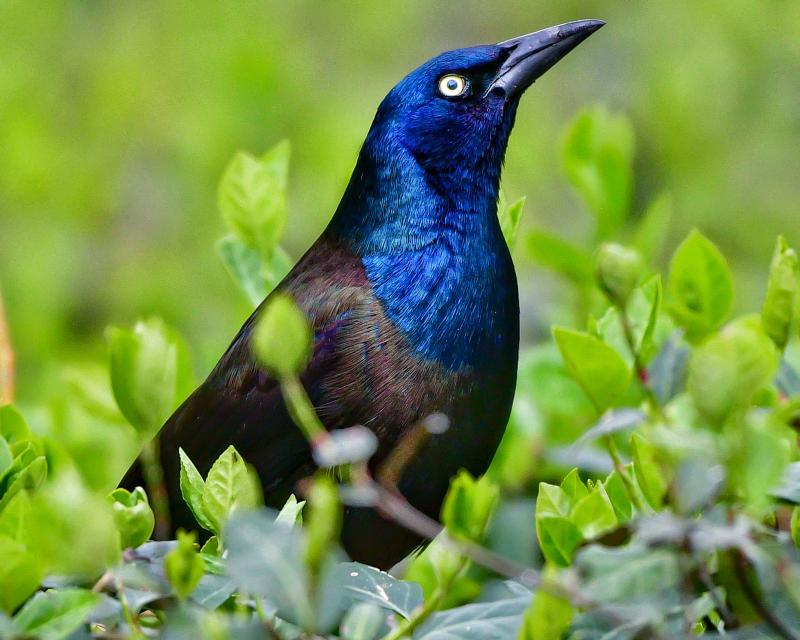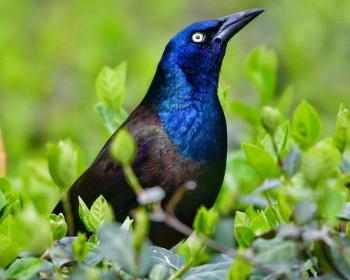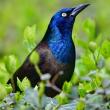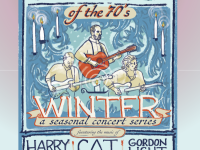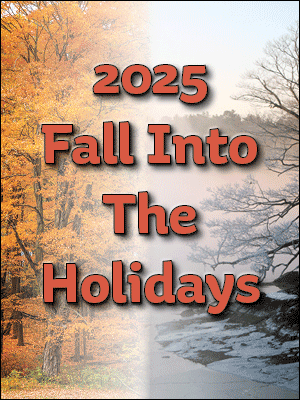Flaming Indigo Blackbirds and Other Backyard Surprises
We opened the squeaky door of a closet this morning and could have sworn it was the high-pitched, twittering call of a bald eagle. Amazing what a little social isolation and slowing down will do!
The returning spring migrant birds have certainly not been practicing social isolation here in Maine. In fact, at this time of year, many of them are doing exactly the opposite. A little over a week ago we saw 700 common mergansers, the males with their gleaming white bodies and blackish-green heads looking especially obvious against the dark waters of the Kennebec River in Richmond. A scan of the harbor in Damariscotta over the weekend (no other humans within 100 feet, rest assured) yielded a count of 50 of those tiniest of ducks, the bufflehead.
Both of these species are massing up in migration before they head north, hopscotching to ice-free rivers, lakes, and coastal bays (in the case of bufflehead). Both species nest in tree cavities, especially old woodpecker holes, and both species have the majority of their breeding range within the Boreal Forest region of Canada and Alaska. Common mergansers also nest throughout much of Maine.
This morning we followed our own recommendation and did a five-minute count of the birds in our yard as we have each day. We even submitted it to eBird as we had also suggested.
One species that has made more of an appearance in our yard this past week has been the common grackle. We have to agree with the sentiment of a photographer who posted a photo on social media of one from Central Park a few days ago. She noted that the name “common” was completely inappropriate and suggested that the name be changed to “Flaming Indigo Blackbird.” That would certainly change the perception of the bird for many people!
The reason she suggested that name change was because common grackles actually have an intensely purple-blue head that is stunning when seen in good light. We’ve had a handful of grackles at the feeder each day, providing some close-up looks from the kitchen window to brighten even the days with rain and snow falling.
Many people are surprised to learn that common grackles have recently been added to the Global Near Threatened list by BirdLife International. Most birders have thought of them as one of the most common birds and have paid little attention to them (except, perhaps, as a first sign of spring). True, their sounds are not the melodious songs of thrushes or warblers but rather harsh chucks and squeaks. And they are very opportunistic feeders that can sometimes include raiding the nests of smaller birds. But they warrant our attention.
The truth is, common grackles are becoming decidedly less common, having declined by more than 50 percent since 1970. That doesn’t mean that they are not still abundant, with estimates for the entire continent of perhaps over 100 million individuals. Still, a loss of 100 million in numbers since 1970 is shocking. More shocking too is the fact that we don’t really know why the numbers have dropped so precipitously. Here in Maine the decline has been even greater—a whopping 70 precent since about 1970.
We are soaking in the beauty of every one of the “Flaming Indigo Blackbirds” that we see!
Hope all of you are finding ways to get peace and joy from birds and nature too. Stay safe out there!
Jeffrey V. Wells, Ph.D., is a Fellow of the Cornell Lab of Ornithology and Vice President of Boreal Conservation for National Audubon. Dr. Wells is one of the nation's leading bird experts and conservation biologists and author of the “Birder’s Conservation Handbook.” His grandfather, the late John Chase, was a columnist for the Boothbay Register for many years. Allison Childs Wells, formerly of the Cornell Lab of Ornithology, is a senior director at the Natural Resources Council of Maine, a nonprofit membership organization working statewide to protect the nature of Maine. Both are widely published natural history writers and are the authors of the popular book, “Maine’s Favorite Birds” (Tilbury House) and “Birds of Aruba, Bonaire, and Curaçao: A Site and Field Guide,” (Cornell University Press).
Event Date
Address
United States

